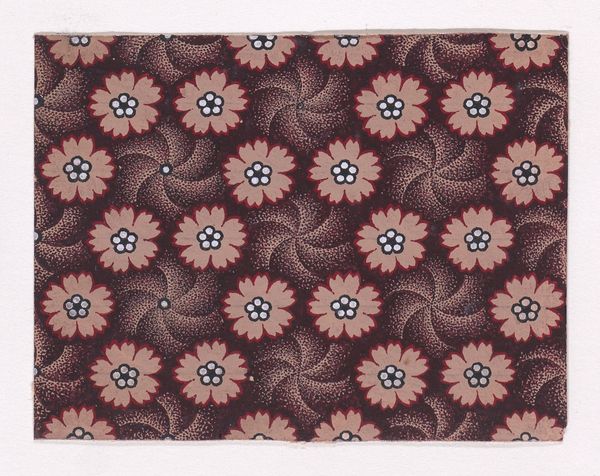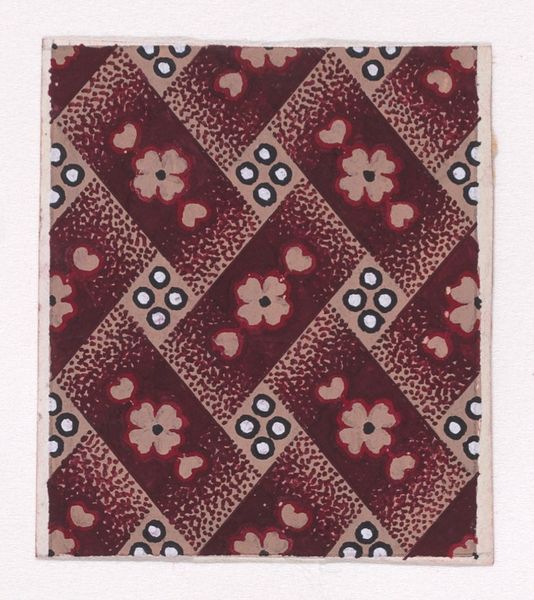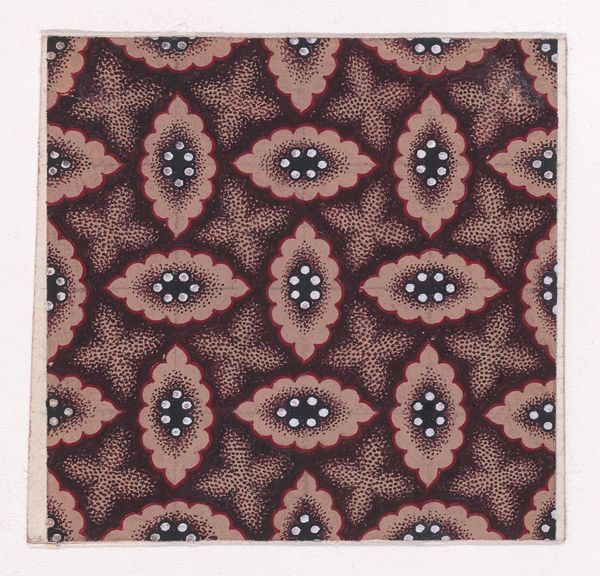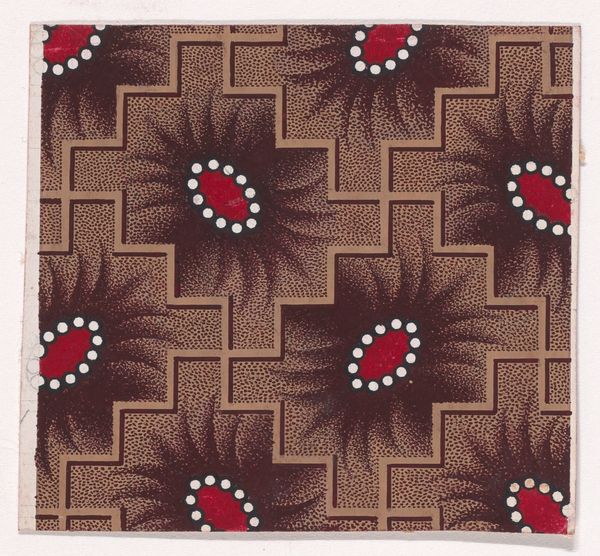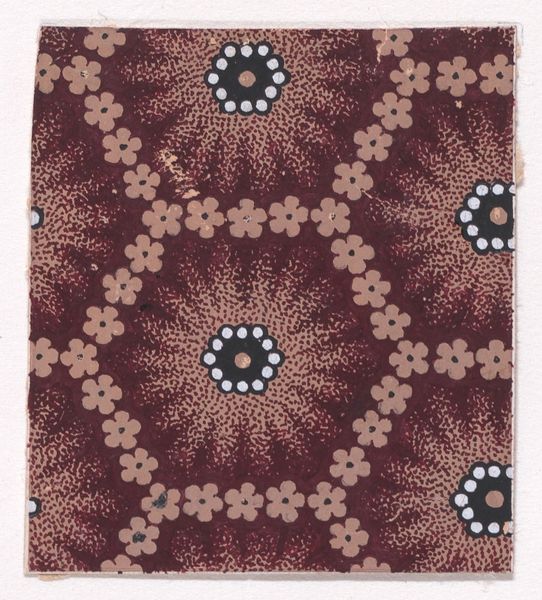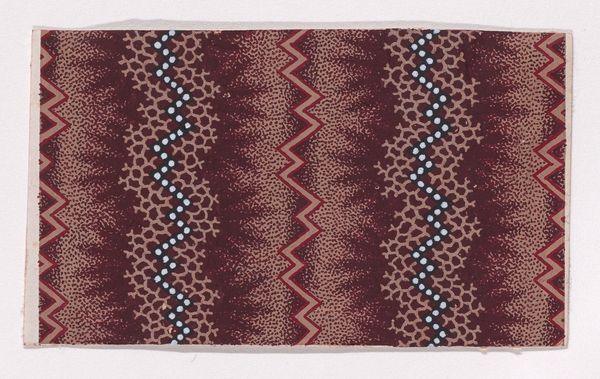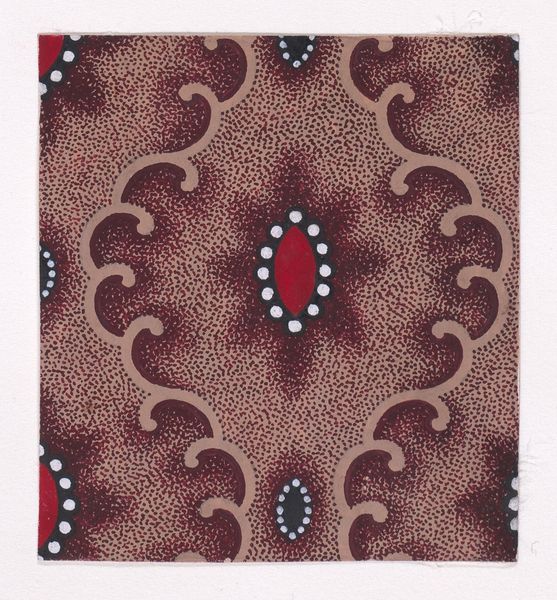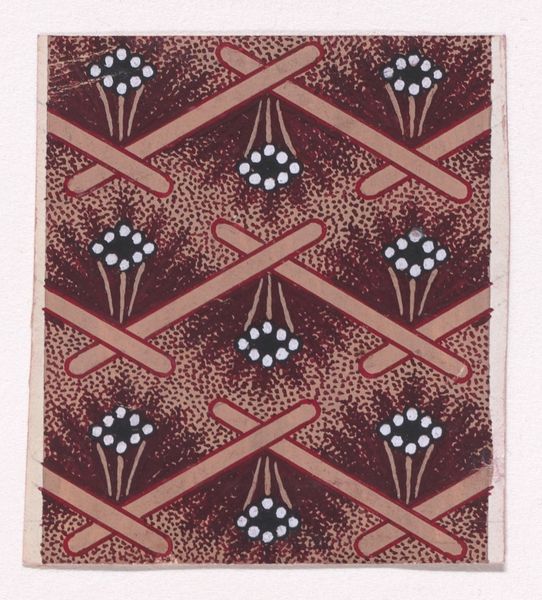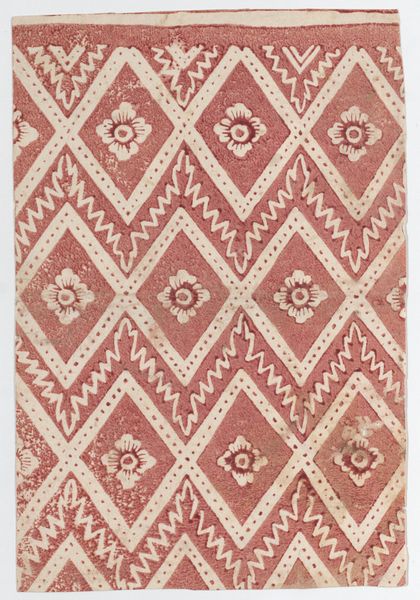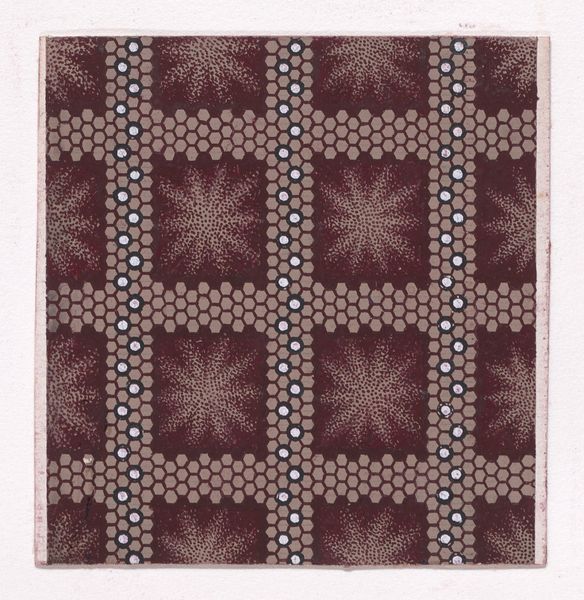
Textile Design with a Honeycomb Pattern Formed with Small Rosettes and with Alternating Rows of Rosettes Framed by Pearls 1840
0:00
0:00
print, textile
#
natural stone pattern
#
naturalistic pattern
# print
#
textile
#
pattern background
#
ethnic pattern
#
geometric
#
flower pattern
#
repetition of pattern
#
pattern repetition
#
textile design
#
decorative-art
#
imprinted textile
#
layered pattern
Dimensions: Sheet: 2 11/16 × 2 5/8 in. (6.9 × 6.6 cm)
Copyright: Public Domain
Editor: So this is "Textile Design with a Honeycomb Pattern…" from 1840. It’s so intricate! The repetition of those little rosettes is almost dizzying. How would you interpret this piece, particularly within its historical context? Curator: Well, immediately I think about the rise of industrialization and the increasing availability of textiles during the 19th century. Do you think a pattern like this reflects anxieties about mass production versus individualized craft? The almost obsessive repetition… Editor: That's a really interesting point! I hadn’t thought about it that way. I was more focused on the visual impact, the geometric structure being so pleasing. Curator: Exactly. It is beautiful, undeniably so. But consider this: patterns, particularly in textile design, often carry cultural coding. Who was producing this textile? Who was consuming it? And what power dynamics are embedded in that relationship? Was this intended for the elite, imitating hand-crafted designs, or did it democratize design? Editor: It’s fascinating to consider who had access to something like this back then and what messages the design may carry. Does the fact that the artist is anonymous influence that? Curator: Absolutely. Anonymity obscures agency, it removes accountability and raises important questions about labor, gender, and class in the production of such works. This wasn't seen as ‘high art’; these were likely female artisans whose creative expressions have been historically devalued. It makes you think about who gets remembered and whose stories get erased. Editor: Wow, that really reframes how I see the piece. I thought it was just a pretty pattern, but now I am thinking about it a lot more critically. Curator: That is why context matters. It gives voice to histories we don't often hear.
Comments
No comments
Be the first to comment and join the conversation on the ultimate creative platform.
